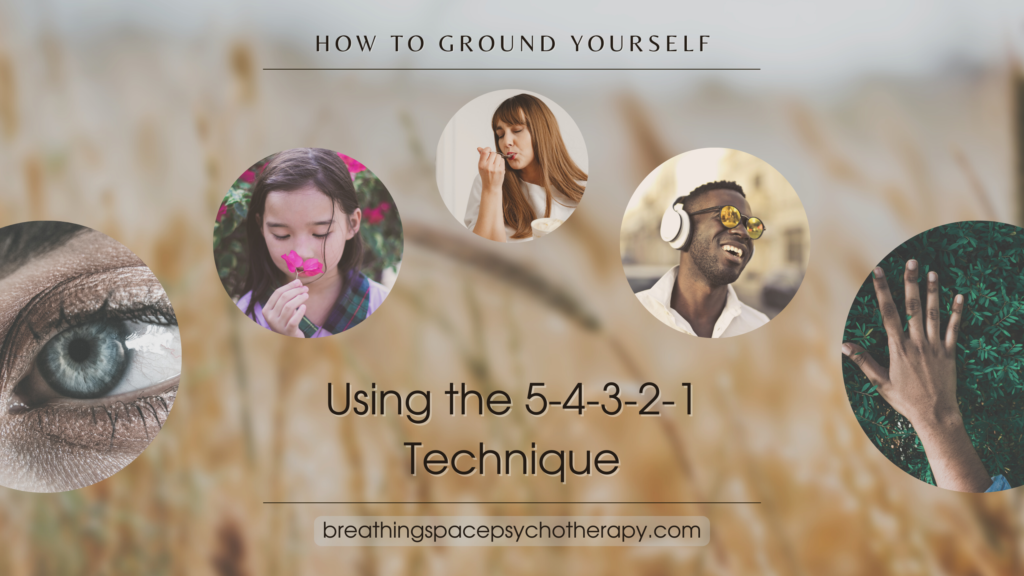What is the 5-4-3-2-1 grounding technique?
The 5-4-3-2-1 technique is a grounding technique that uses our 5 senses to divert our attention from our thoughts, worries, and fears and brings our focus to our body, sensory experiences, and the present moment.
With this technique, you use your 5 senses to take in your current surroundings—wherever you are. Strive to notice small details that you would usually overlook or tune out.
When should I use the 5-4-3-2-1 technique?
You can use the 5-4-3-2-1 technique whenever
- you feel dissociated, anxious, or panicky;
- you are experiencing or about to experience a panic attack, flashbacks, emotional distress, or impulsive urges;
- you are distracted, unfocused, ruminating, or stressed.
The best part? This is a portable tool! You can practice this whenever and wherever (and without anyone knowing).
How do I practice the 5-4-3-2-1 grounding technique?
Here is how you can ground yourself (anywhere and anytime) in 5, 4, 3, 2, 1.
- What are 5 things you can see? Find objects, look for small details, and take note of the lighting. What colors, designs, patterns, shapes, quantities, light, and shadows do you notice?
- What are 4 things you can feel? Note what you’re touching right now: the ground, the chair, the temperature, the clothes on your body, and the sun on your skin. Pick up objects and notice their weight, texture, and sensations.
- What are 3 things you can hear? Note the sounds around you: cars driving by, the wind blowing, the air conditioning, a ticking clock, conversations, and birds singing.
- What are 2 things you can smell? Notice the smells in the air, or find something nearby that has a scent.
- What is 1 thing you can taste? If you have a beverage, candy, gum, or food on hand, take notice of the flavors, textures, and temperature of the beverage or food. Maybe you can still taste the toothpaste or a leftover meal. If neither of these is available at the moment, then think of a food or beverage and imagine its distinct flavor.
| Tip: If you are feeling too distracted or finding it difficult to focus during this technique, you can voice out loud, sign to yourself, or write your observations as you’re describing them. |
Notes for Practicing
Take your time with each sense and observation. Allow yourself to slow down and take in the full experience.
Try not to make good or bad judgments; instead, try to stay objective about your observations. Describe what you observe as it exists without your comments, narratives, or judgment. For example,
- Observation with a comment: “I smell freshly cut grass. I need to mow my lawn.” or “The wall is blue. I don’t like the color blue.”
- Observation with judgment: “I hear the annoying kids screaming outside.” or “I hear kids having fun outside.”
- Observation with a narrative or story: “There is a clownfish. I remember when I had a clownfish in the seventh grade…”
Instead, say,
- “I smell freshly cut grass.”
- “The wall is blue and doesn’t have many decorations. There’s one outlet, a convector, and…”
- “I hear kids screaming outside. Sounds like three or, maybe, four children.”
- “There is a clownfish. It’s orange and white with a black outline. It’s swimming around a rocky tank ornament.”
If you find your mind wandering or you’re telling yourself stories about your observations, stop and gently lead your focus back to the technique—find the next thing you can observe in your current moment.
Most importantly, take note of your mood before and after you complete this technique to see if this grounding technique works for you. It may take a few tries to determine if it works for you.





